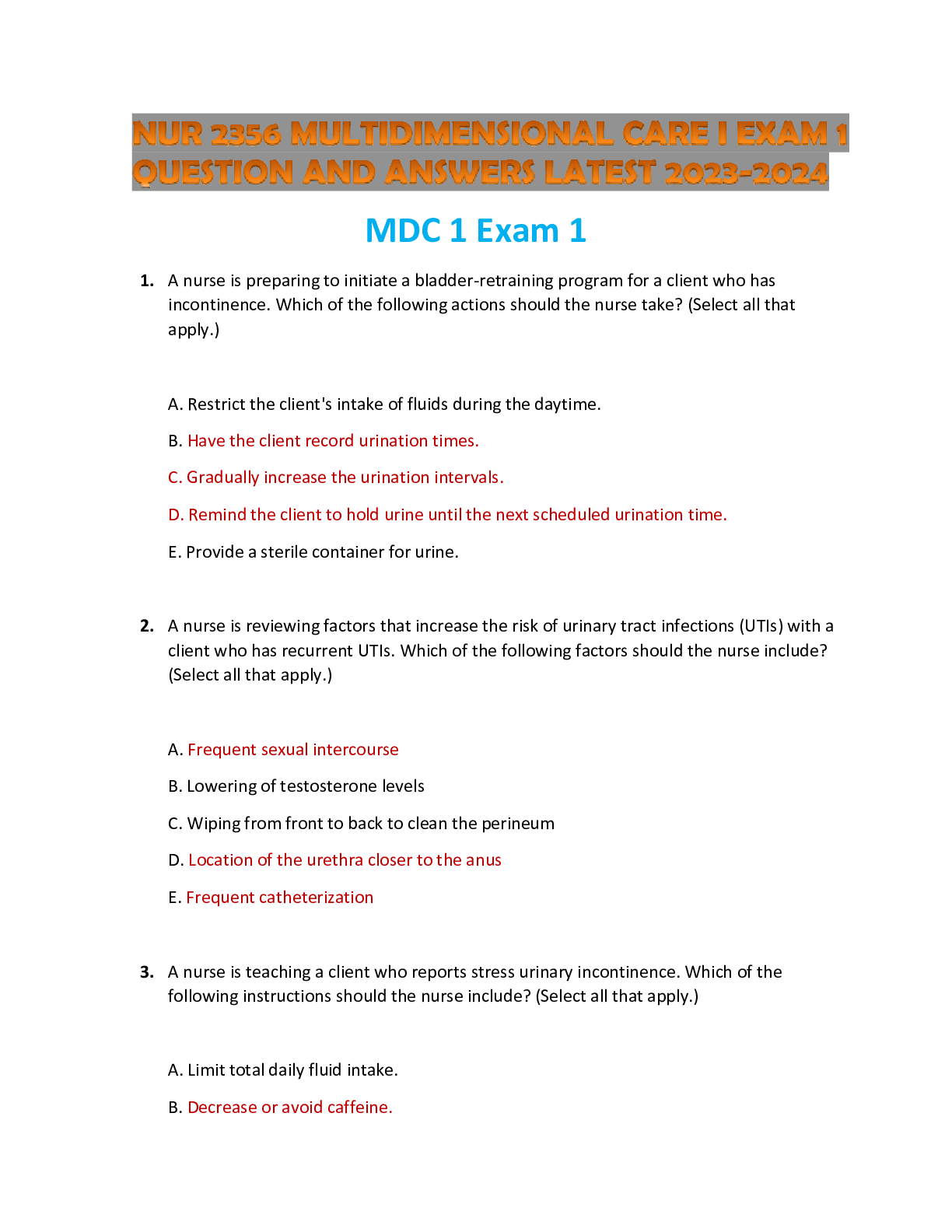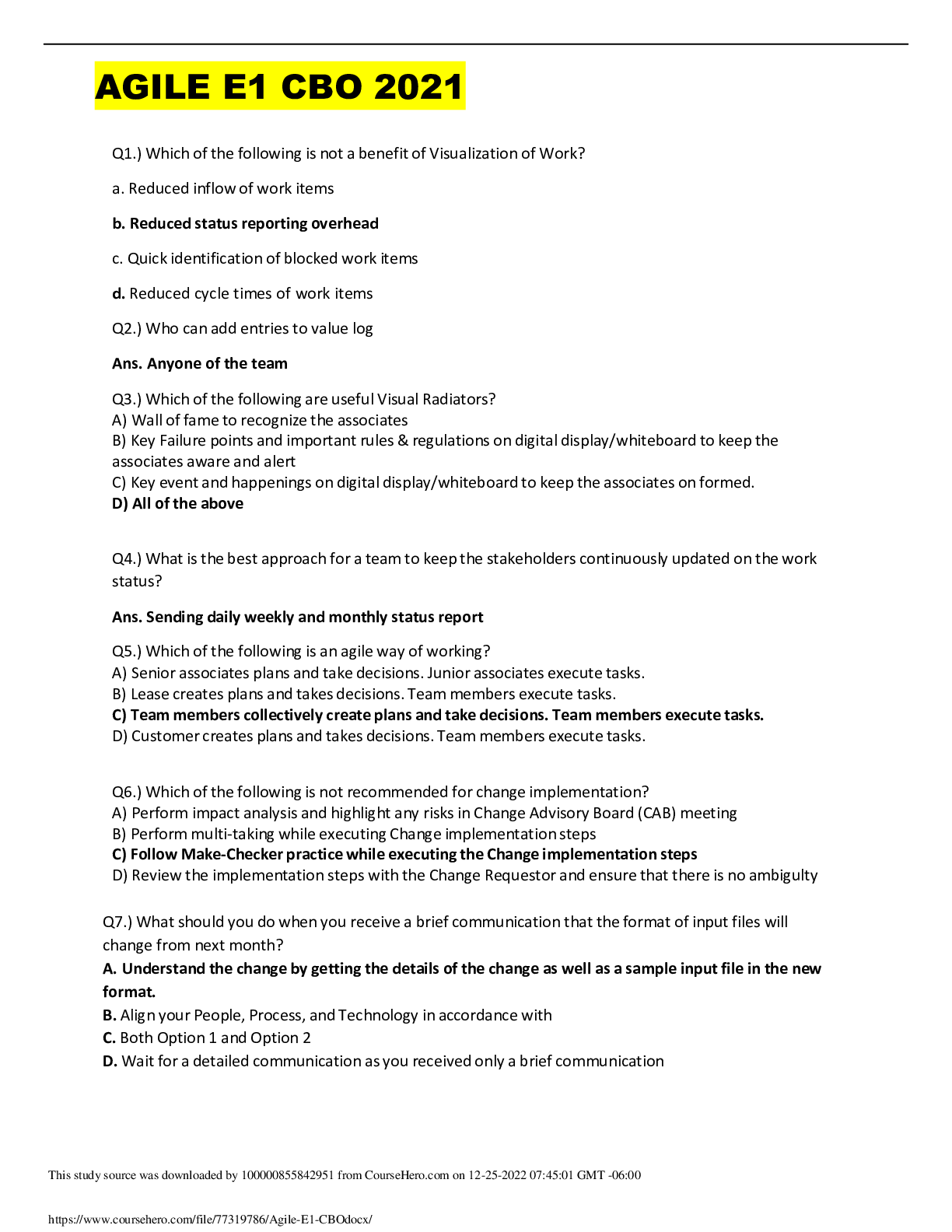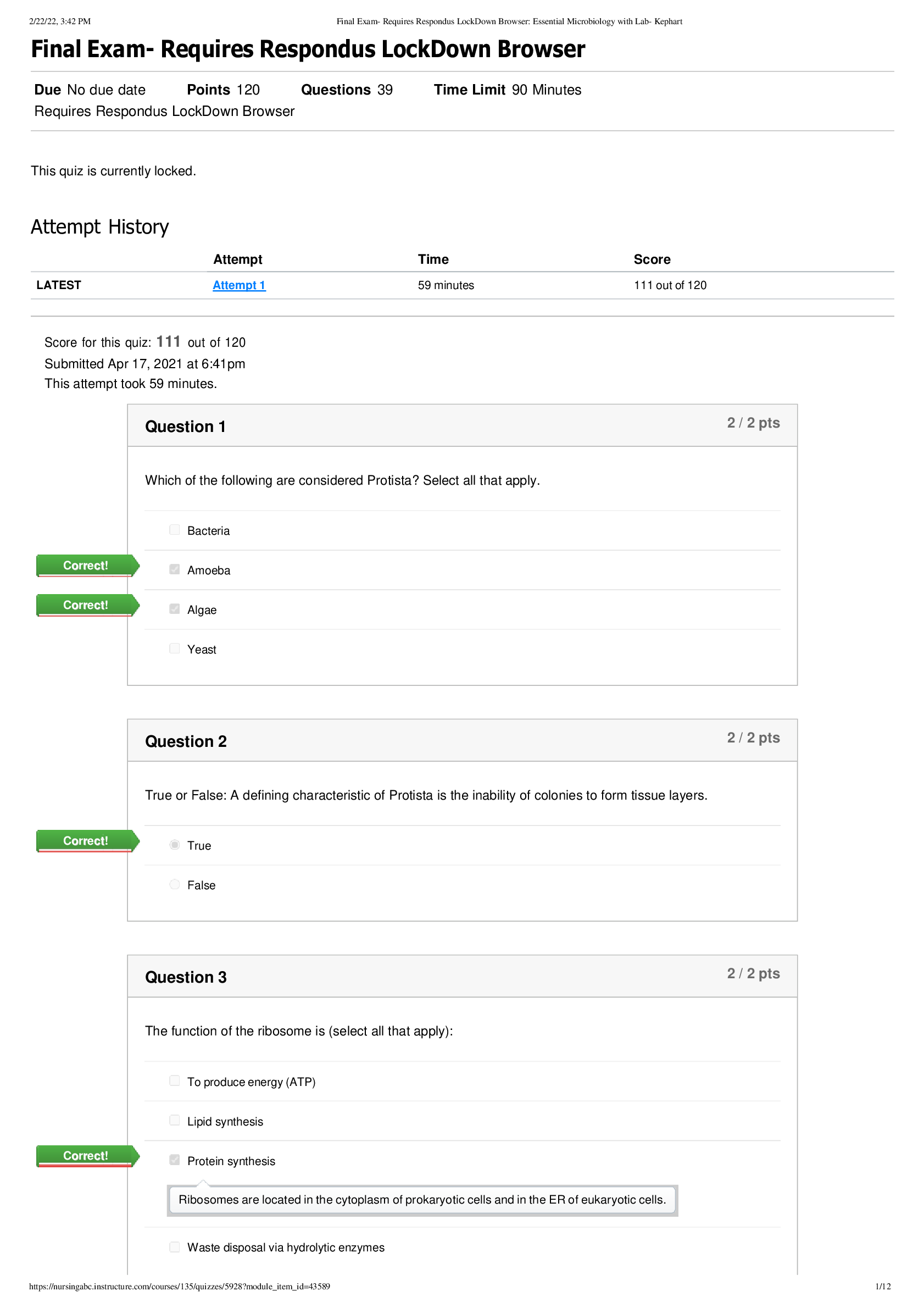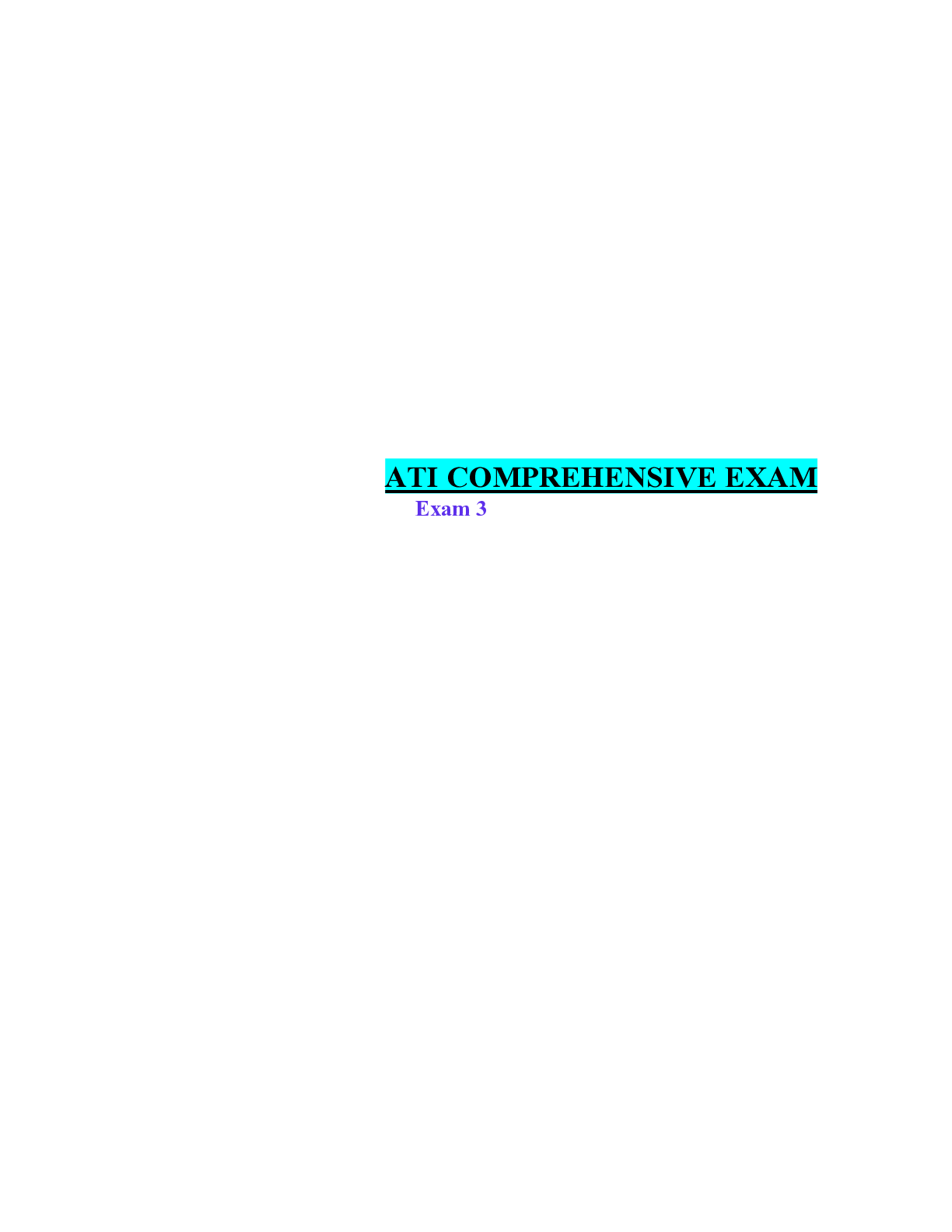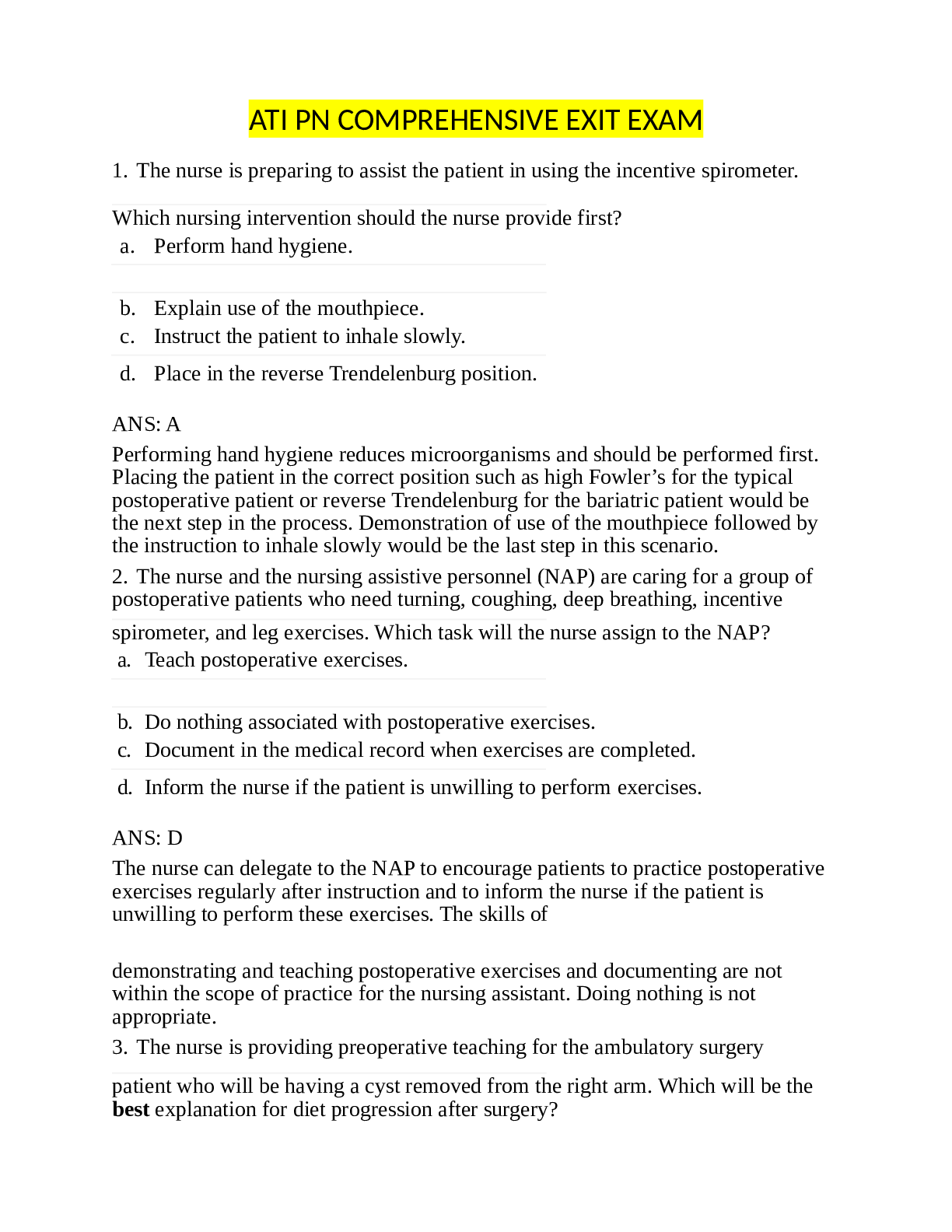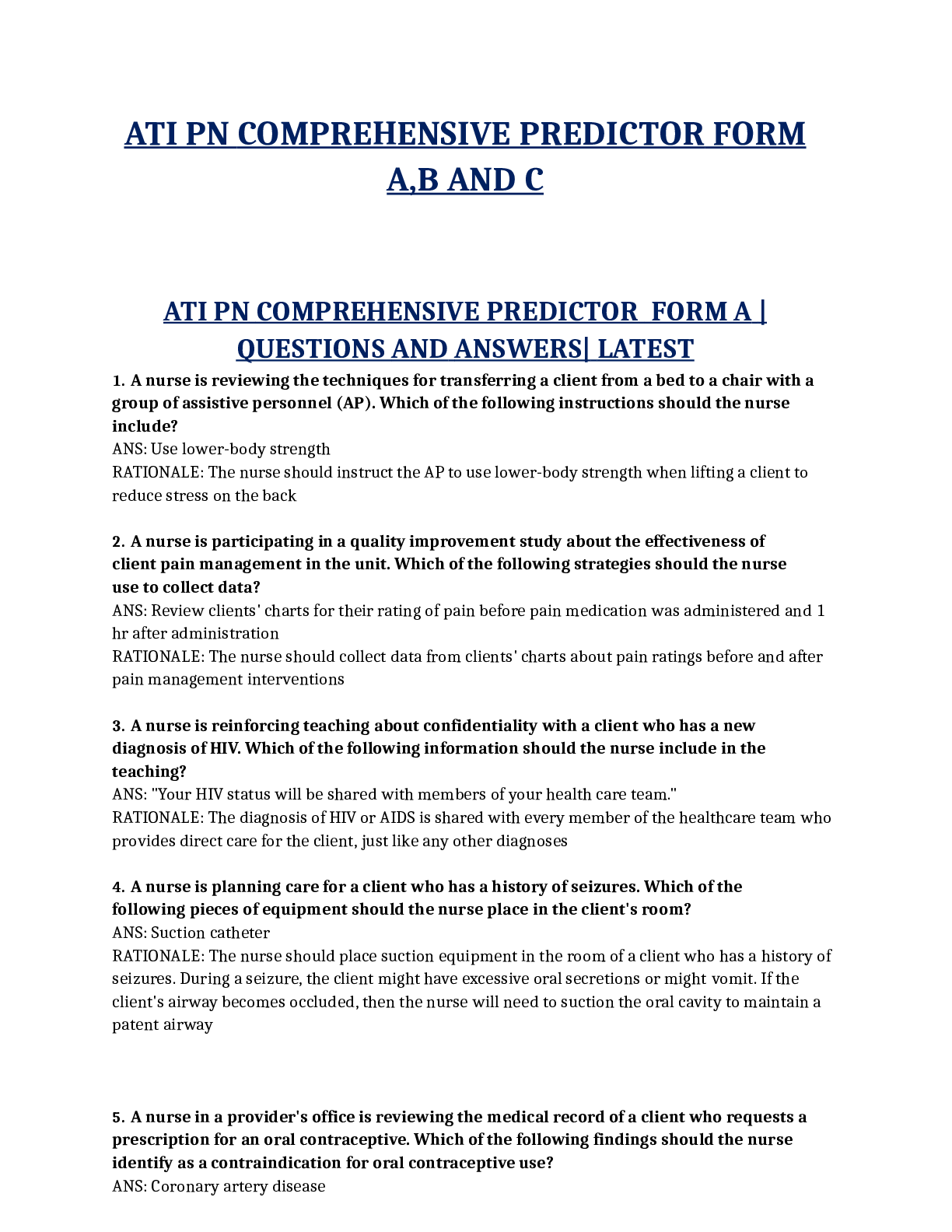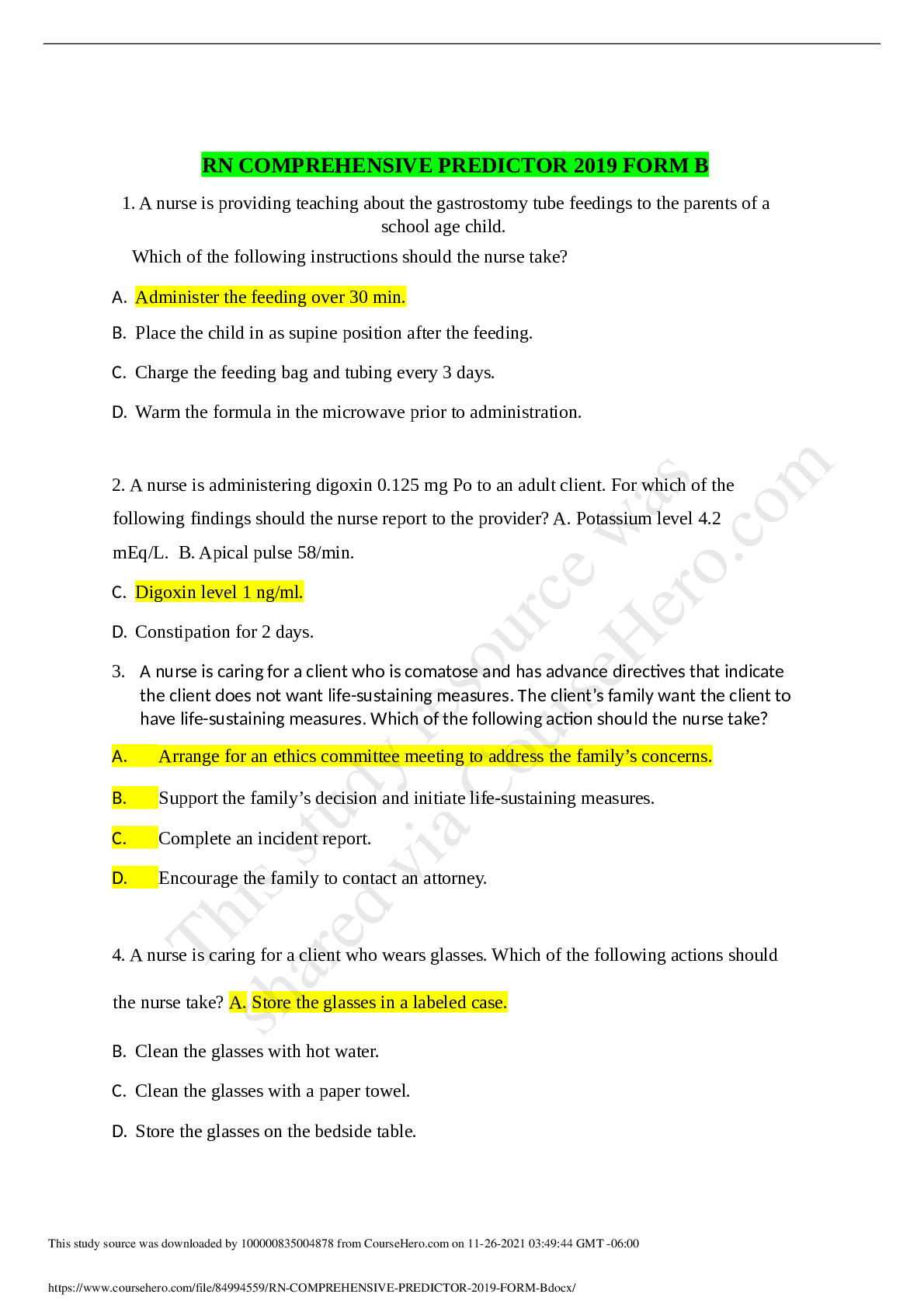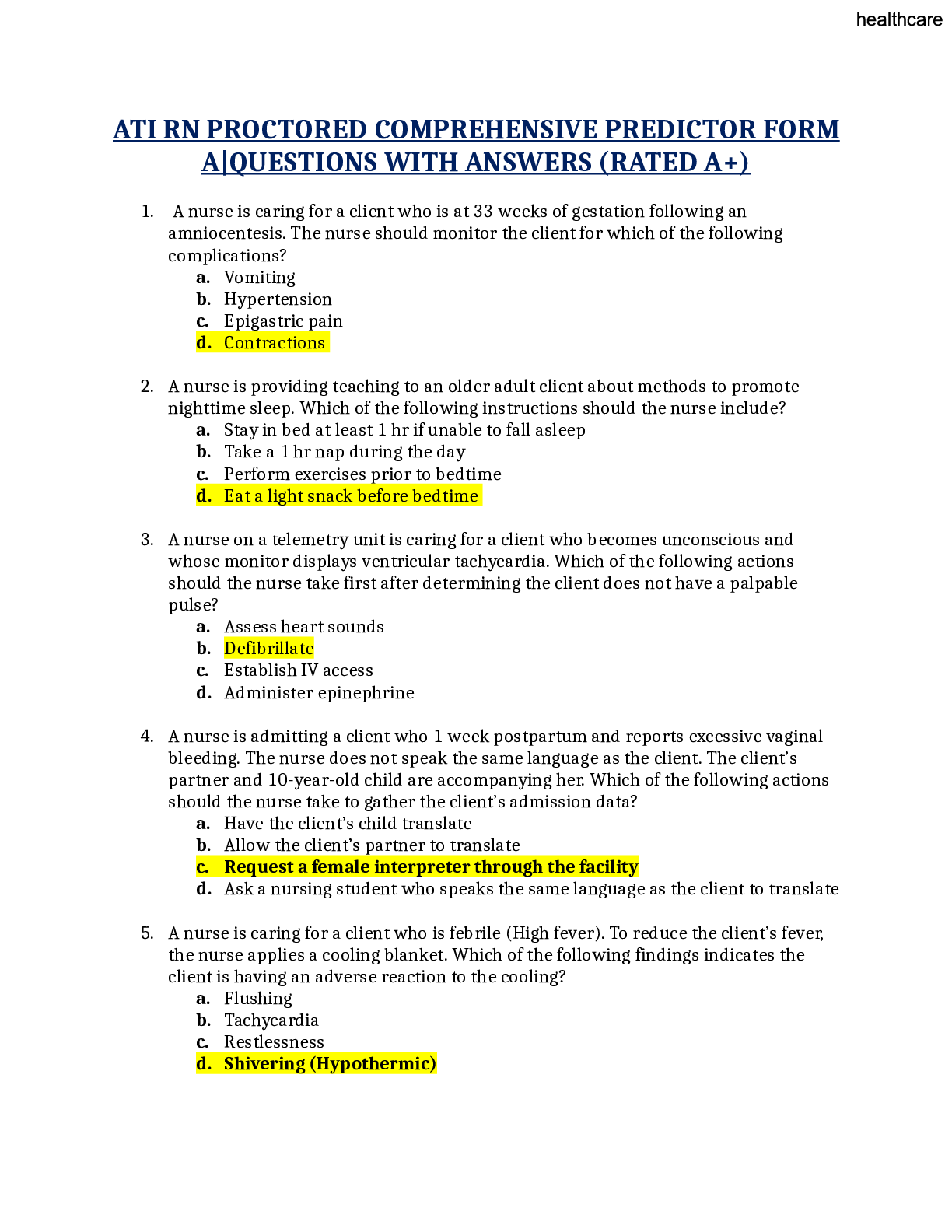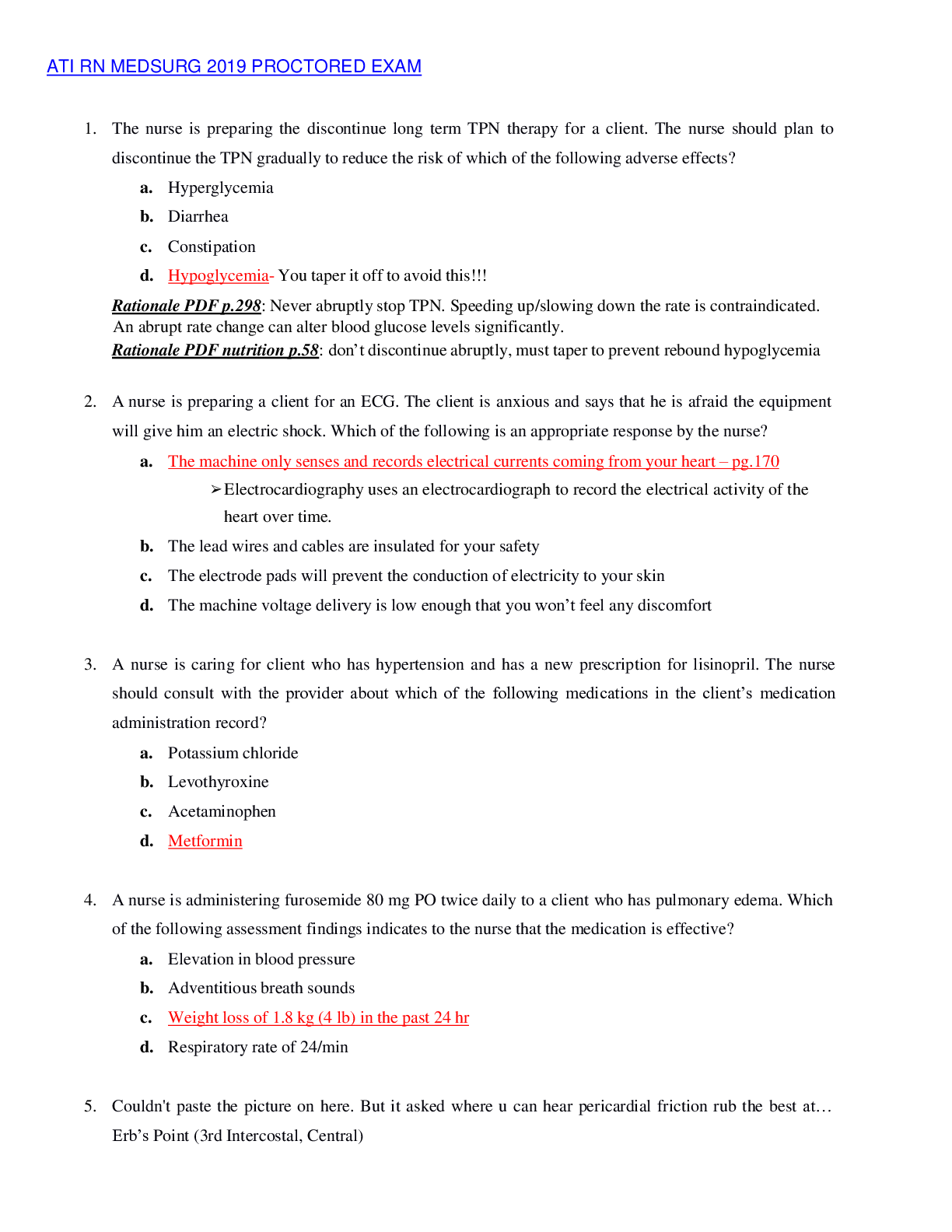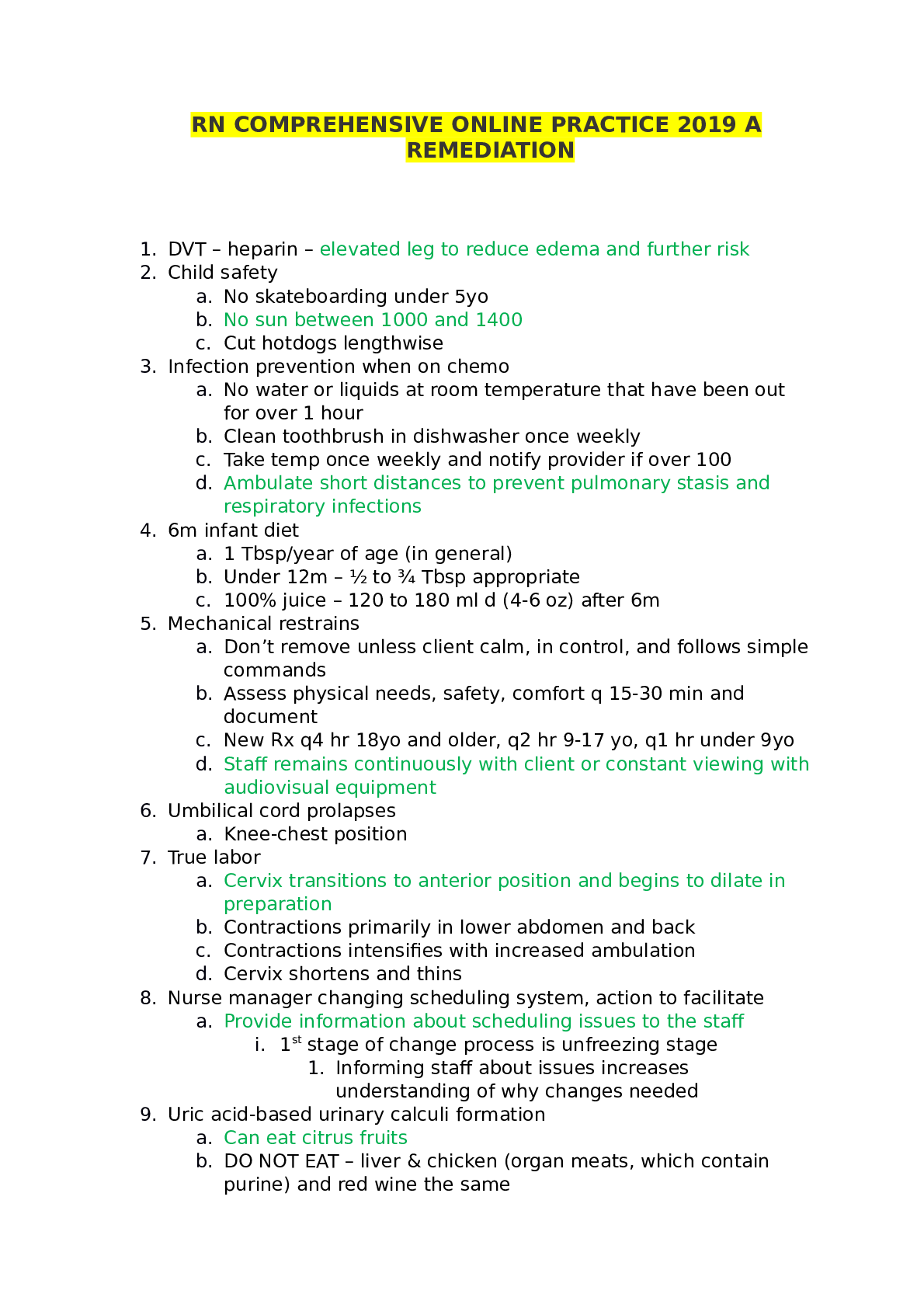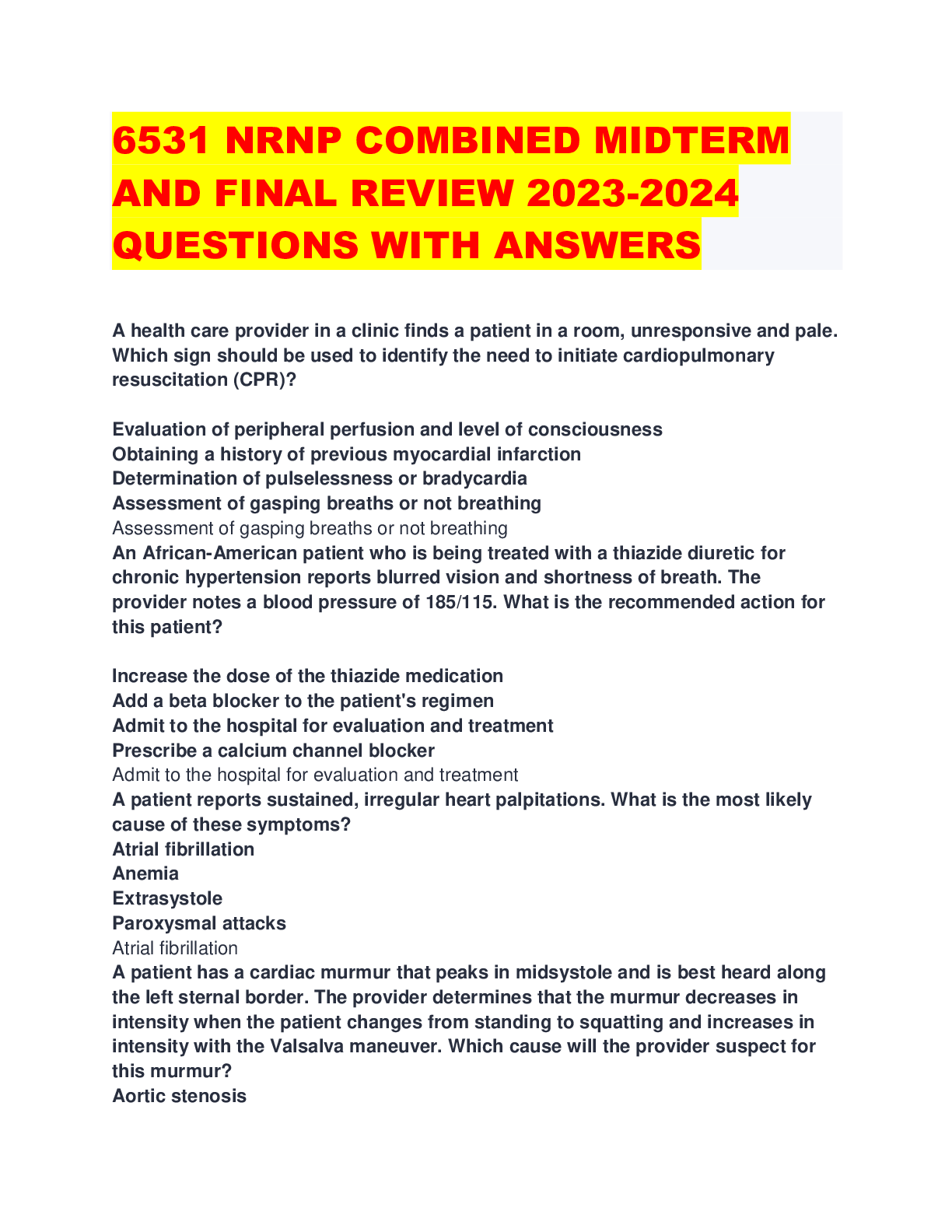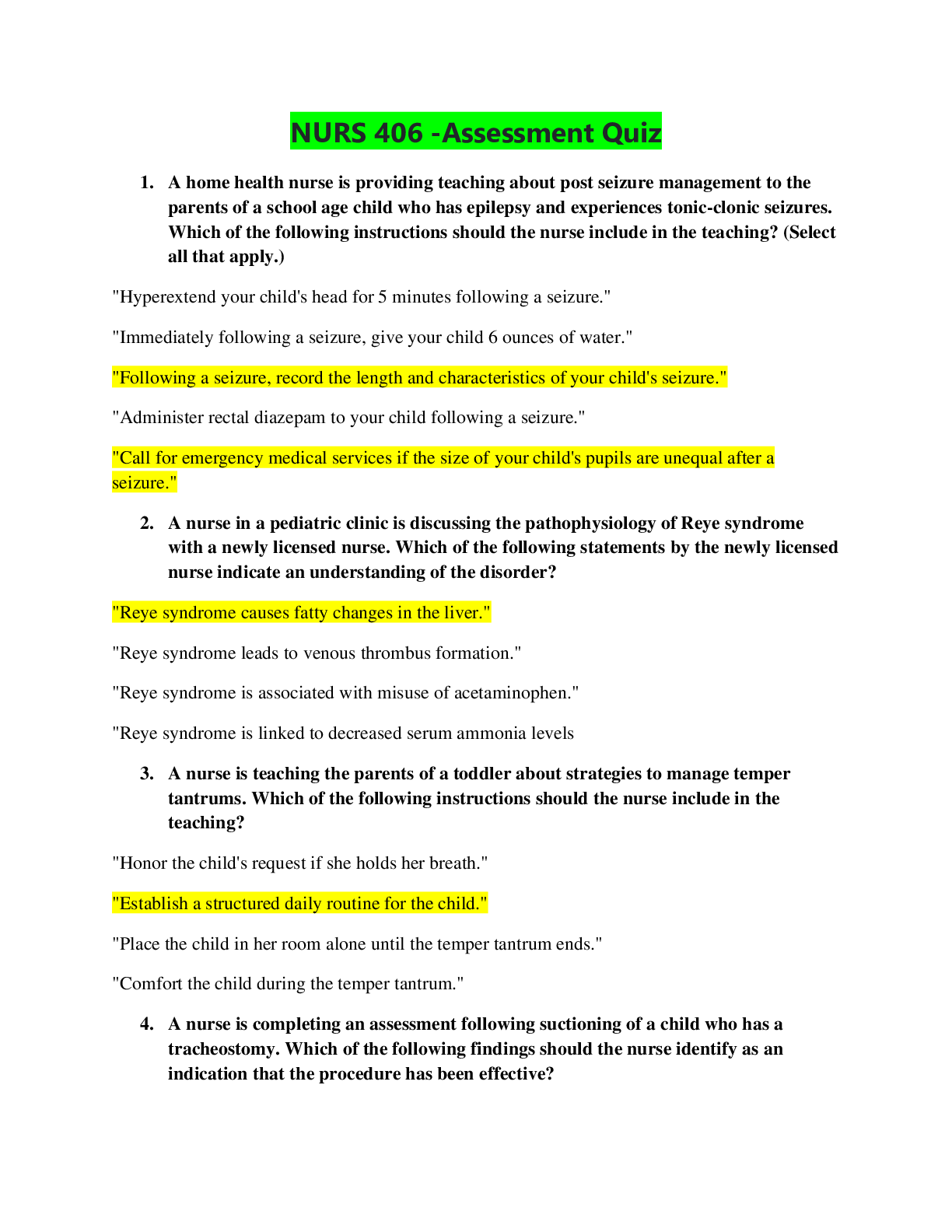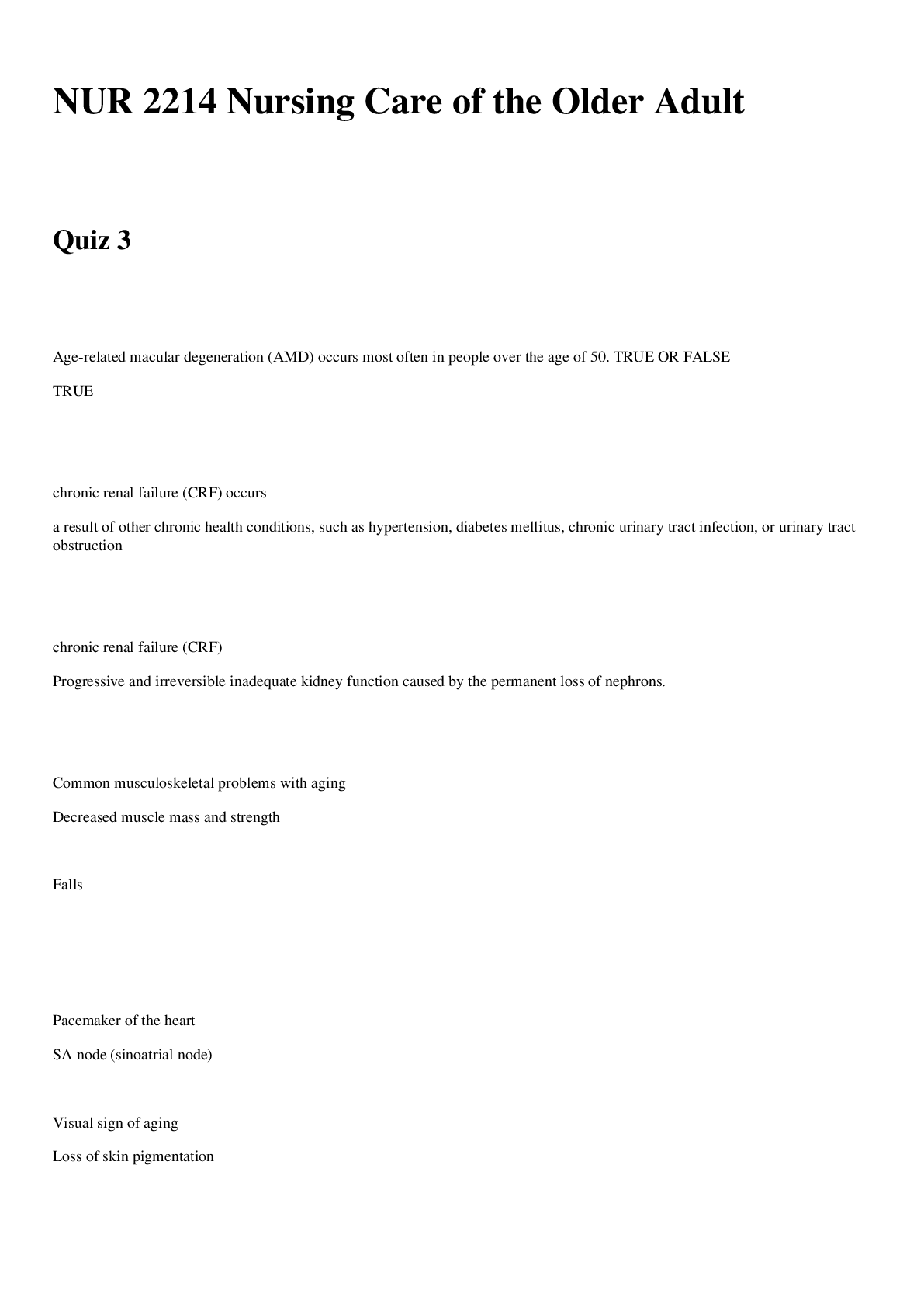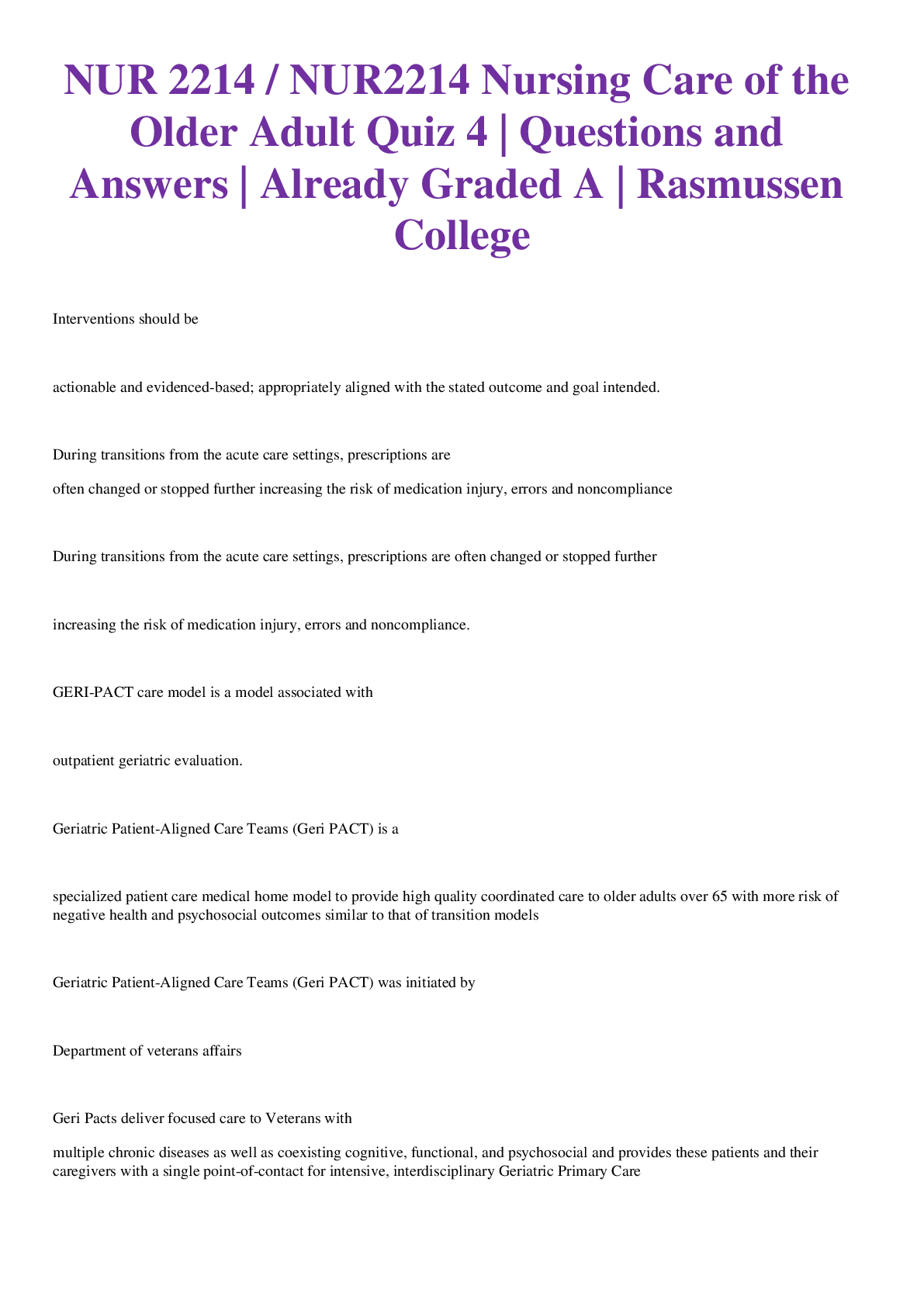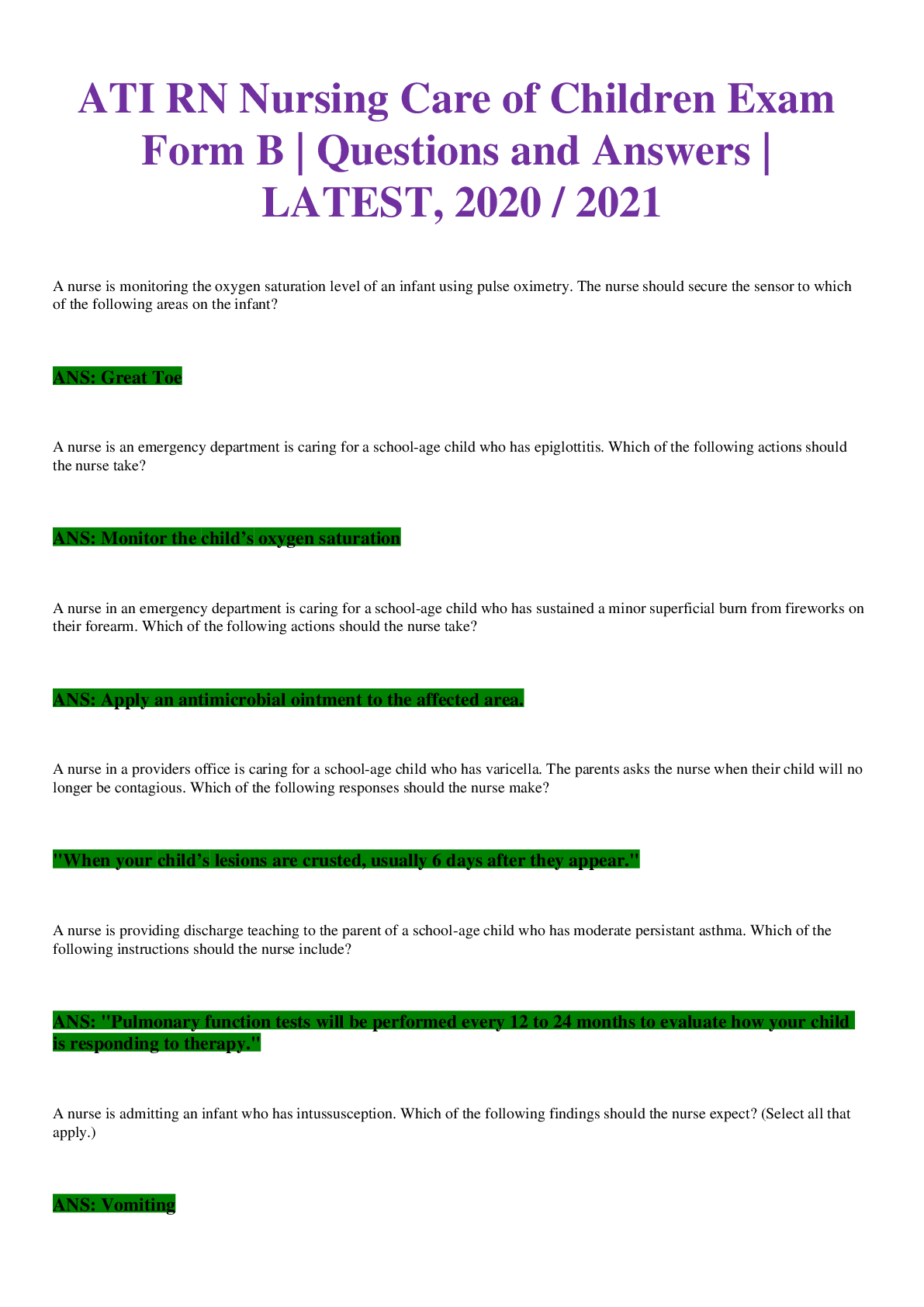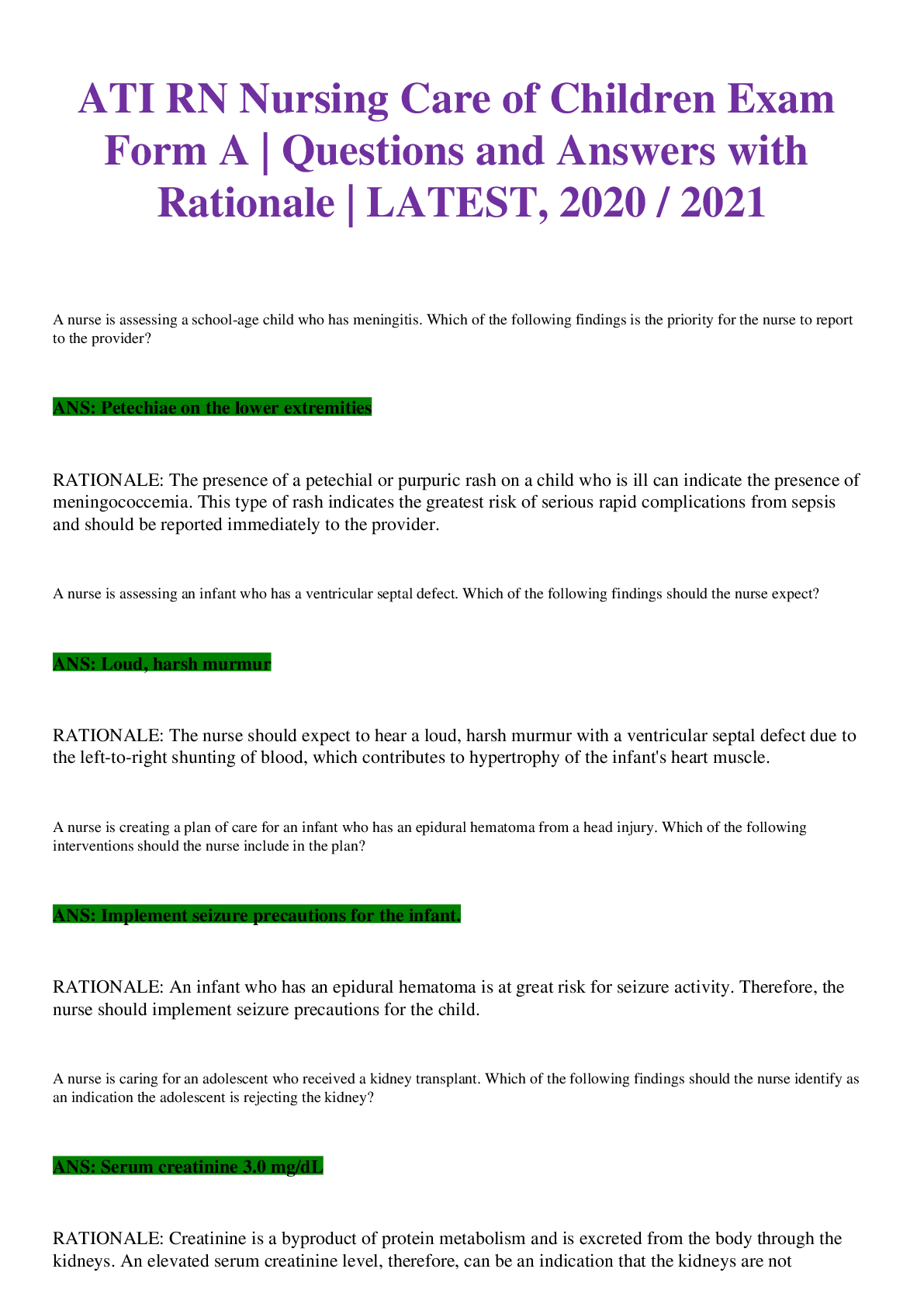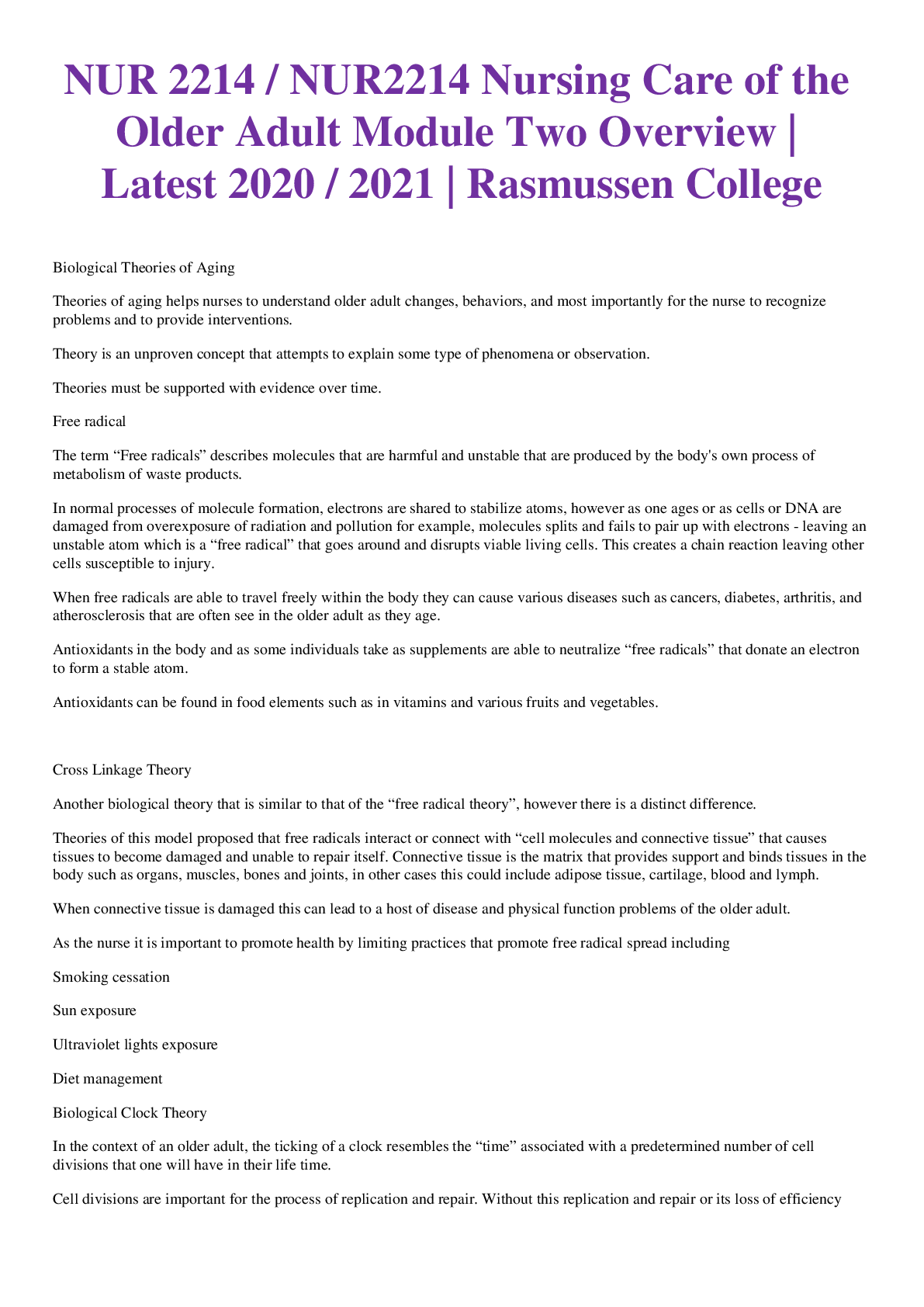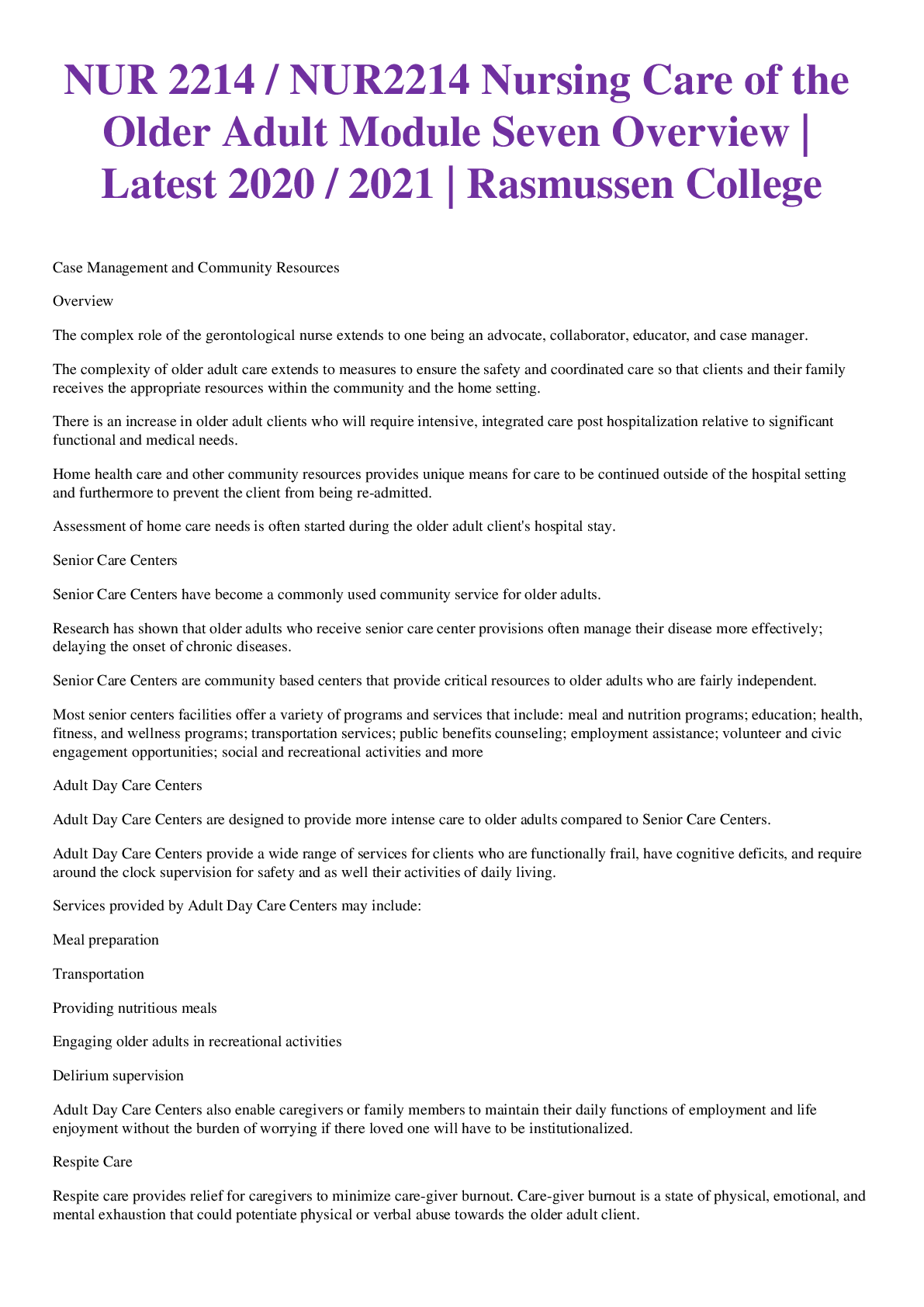healthcare > EXAM > ATI RN NURSING CARE OF CHILDREN PROCTORED EXAM 2023-2024 WITH NGN QUESTIONS WITH ANSWERS (All)
ATI RN NURSING CARE OF CHILDREN PROCTORED EXAM 2023-2024 WITH NGN QUESTIONS WITH ANSWERS
Document Content and Description Below
ATI RN NURSING CARE OF CHILDREN PROCTORED EXAM 2023-2024 WITH NGN QUESTIONS WITH ANSWERS Teaching the parents of a school-aged child who has a new diagnosis of osteomyelitis of the tibia. The ... nurse should identify that which of the following statements by the parents indicates an understanding of the teaching? my child will have a cast until healing is complete. My child will receive antibiotics for several weeks. My child can return to playing sports once he is discharged. My child needs to be in contact isolation. Answer: b The nurse should instruct the parent that the child will receive antibiotic therapy for at least 4 weeks. Surgery might be indicated if the antibiotics are not successful. A - incorrect Weight bearing must be avoided with osteomyelitis. Therefore, the child is placed in a comfortable position with the limb supported. There is no indication for a cast. C- incorrect Weight bearing should be avoided to prevent complications and minimize pain. Therefore, it will be several weeks to months before the child can play contact sports. D- incorrect Contact isolation is NOT necessary, because osteomyelitis is not a communicable illness. A nurse is auscultating the lungs of an adolescent who has asthma. The nurse should identify the sound as which of the following? Click the audio button to listen. A- Biots respiration B- Chaney Stokes respiration C- tackypnea D - Bradypnea Answer- c The nurse should identify the sound heard during auscultation as tachypnea, which is a rapid, regular breathing pattern. This breathing pattern often occurs with anxiety, fever, metabolic acidosis, or severe anemia. A- Biot's respirations are periods of apnea alternating with two or three shallow breaths. B- Cheyne-Stokes respirations are periods of apnea alternating with periods of hyperventilation. D- Bradypnea is a slow, regular breathing pattern. A nurse in an emergency department is caring for a school-age child who is experiencing an anaphylactic reaction. Which of the following is the priority action by the nurse? A- Elevate the head of the child's bed B- insert a large-bore IV catheter for the child C- determine the allergen that caused the child's reaction D- administer IM epinephrine to the child Answer- d When using the urgent vs nonurgent approach to client care, the nurse determines that the priority action is administering IM epinephrine to the child. During an anaphylactic reaction, histamine release causes bronchoconstriction and vasodilation. This is an emergency because ultimately it causes decreased blood return to the heart. A- Elevating the head of the child's bed is important to facilitate breathing and circulation. However, it is not the priority action the nurse should take. B- Inserting a large bore IV catheter is important to facilitate administration of IV fluids and medications. However, it is not the priority action the nurse should take. C- Determining the allergen that caused the child's reaction is important to prevent any additional episodes of anaphylaxis. However, it is not the priority action the nurse should take. The nurse is preparing to administer an immunization to a four-year-old child. Which of the following actions should the nurse plan to take? A- Place the child in a prone position for the immunization B- request that the child's caregiver leave the room during the immunization C- administer the immunization using a 24 gauge needle D- inject the immunization slowly after aspirating for 3 seconds Answer - c The nurse should administer an immunization for a 4-year-old child using a 24-gauge needle to minimize the amount of pain experienced by the toddler. A- The nurse should place the child in an upright sitting position for the immunization because this decreases the child's fear and anxiety. B- The nurse should allow the caregiver to stay near the child during the immunization to provide a sense of security and reduce the child's anxiety level. D- The nurse should inject the immunization rapidly and avoid aspiration. These actions decrease the risk of needle displacement and lower the child's fear and anxiety level by decreasing the amount of time it takes to administer the immunization. A nurse is reviewing the laboratory report of an infant who is receiving treatment for severe dehydration. The nurse should identify which of the following laboratory values indicates effectiveness of the current treatment? A- Potassium 2.9 mEq/L B- sodium 140 C- urine specific gravity 1.035 D- BUN 25 mg Answer- b The nurse should identify that a sodium level of 140 mEq/L is within the expected reference range and indicates the current treatment regimen the infant is receiving for dehydration is effective. A- A potassium level of 2.9 mEq/L is below the expected reference range and indicates hypokalemia. [Show More]
Last updated: 6 months ago
Preview 1 out of 32 pages
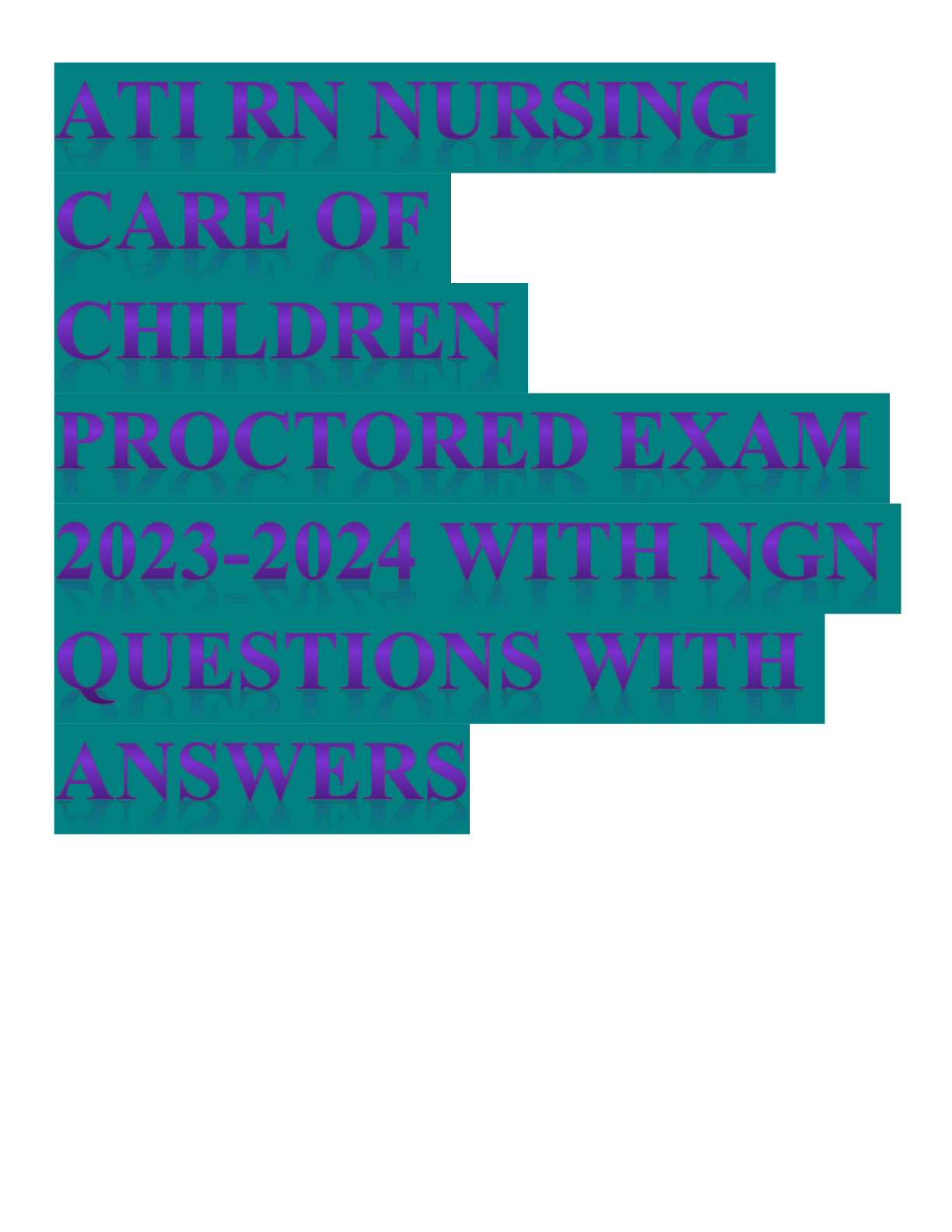
Reviews( 0 )
Document information
Connected school, study & course
About the document
Uploaded On
Oct 21, 2023
Number of pages
32
Written in
Additional information
This document has been written for:
Uploaded
Oct 21, 2023
Downloads
0
Views
97

